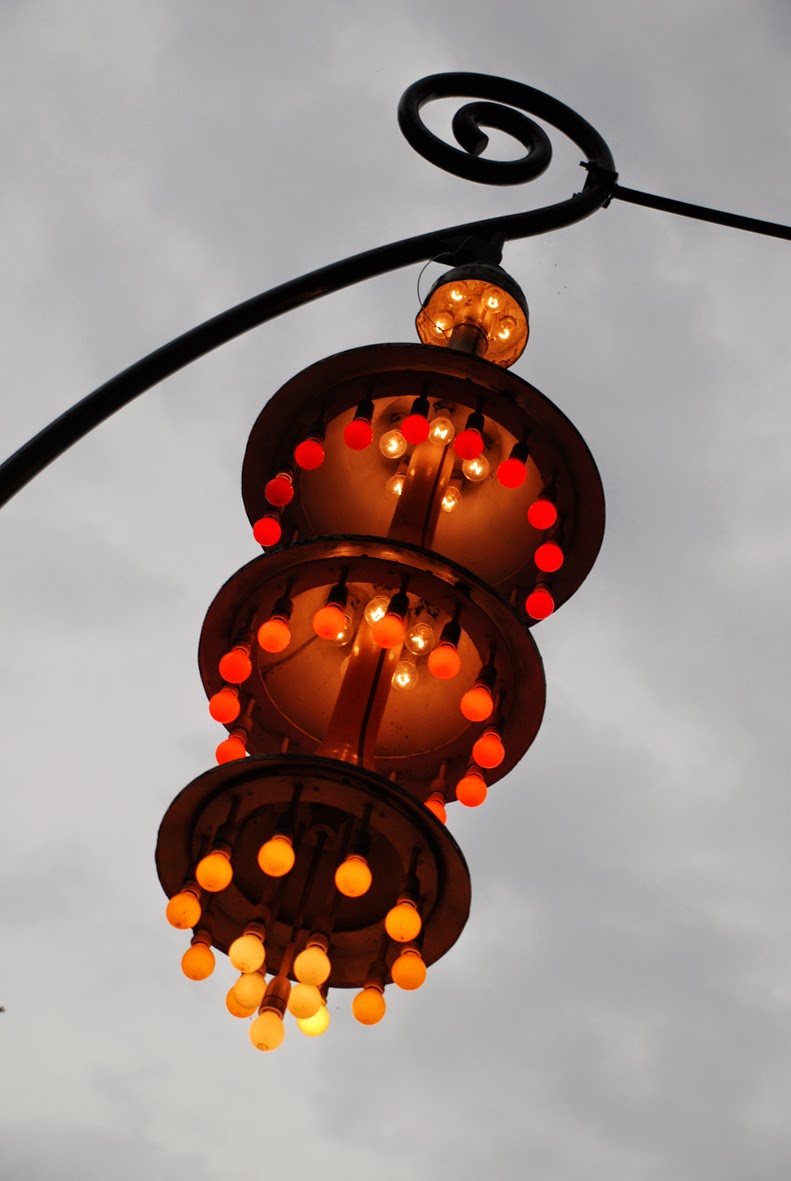Founded as a Viking fishing village in the 10th century, Copenhagen became the capital in the mid-15th century. Its name, København in Danish, derives from Køpmannæhafn meaning "merchants' harbour", which reflects the city's origins as a harbour or place of commerce.
 |
| A splash of colour on Nyhavn |
Having located my accommodation, I set off in search of Nyhavn (New Harbour). Commissioned by King Christian V (r. 1670-1699), Nyhavn is a 17th century waterfront, canal and entertainment area lined with brightly-coloured townhouses on the northern side and lavish mansions on the southern one. In the past, it was notorious for beer, sailors and prostitution. It would later become home to the 19th century Danish author, Hans Christian Andersen (1805-1875), who is alleged to have lived there for 18 years.
 |
| The hustle and the bustle |
 |
| Colourful townhouses |
Nyhavn was the one thing I really wanted to see in Copenhagen. It's also just about the only thing I saw in the sun. Well, that and Strøget, often said to be the world's longest pedestrian shopping street. This is actually a myth, probably spawned from the fact that when it opened it 1962, it was the longest pedestrian street in the world. But much has changed since then.
 |
| Standing on Strøget looking towards Amagertorv |
 |
| Dutch-style building on Strøget |
One of the things I enjoyed most about Copenhagen was simply wandering around the streets (on the one sunny day I had, at least). The downside of all that aimless wandering means that I can't remember where the following pictures were taken.
 |
| Quiet street |
 |
| One of the many bikes in the city |
 |
| An unlocked-but-still-there bike |
 |
| Statue that appealed to me |
The blue skies were a (very) temporary thing, so most of my photos look like the ones below – dull, grey and lifeless. But I took them anyway because I didn't know when or even if I'd be returning to Copenhagen.
One of the must-sees in the city is Amalienborg, the winter home of the Danish royal family. Originally built for four noble families, the palace comprises four identical classical buildings set around an octagonal courtyard. In 1794, when Christiansborg Slot, the then royal residence, burned down, the royal family bought Amalienborg and moved in.
 |
| One of the four classical buildings |
 |
| Grumpy guard |
When Christiansborg Slot burned down, the Palace Chapel was also destroyed. The then king commissioned the architect, Christian Frederik Hansen (1756-1845), to rebuild both the palace and the chapel. Work on the chapel commenced in 1813 and, like the new palace, it was designed in the neoclassical style. Thirteen years later, the chapel was inaugurated with a service commemorating the 1000th anniversary of the introduction of Christianity to Denmark.
For the next 100 years, the chapel was the parish church of the Royal family. It saw weddings, confirmations and lyings-in-state. In 1884, it narrowly avoided being burned to the ground during the second Christiansborg Slot fire. Its luck was to run out in 1992 when, once again, the chapel was destroyed by fire.
The chapel was rebuilt and restored to its former glory. In 1997, it was inaugurated in connection with Queen Margrethe II's silver jubilee. Since then, it has seen many major royal events, among them the baptism of Prince Christian in 2006.
 |
| The interior of the beleaguered Palace Chapel |
 |
| Beautiful benches |
For lovers of castles and palaces, Denmark is an obvious choice. And, having seen Amalienborg, I made my way to Rosenborg Slot. Built in 1606 in the Dutch Renaissance style, Rosenborg was designed to be a summer home for the royal family. The palace is situated in Kongens Have (The King's Garden), which is the country's oldest royal garden.
 |
| Rosenborg Slot |
 |
| Walking in the country's oldest royal garden |
One of the city's biggest attractions is Tivoli Gardens, an amusement park and pleasure garden that was opened in 1843. Its founder, Georg Carstensen (1812-1857) persuaded King Christian VIII (r. 1839-1848) to allow him to create Tivoli on the grounds that "when the people are amusing themselves, they do not think about politics".
Tivoli was designed to be a magical place, home to exotic buildings, an old-timey bandstand, cafés, amusement rides and a scenic railway... It really comes to life after dark when coloured lamps illuminate the garden and reflect on the lake, the exception being dull, grey days like the one I experienced. I was left completely disappointed.
 |
| The one bright spot |
 |
| A duck that looked like it had had its head removed and then sewn back on |
 |
| Some of the coloured lamps |
 |
| Tivoli on a grey day |
I had wanted to visit for Copenhagen for so long so I was disappointed that it didn't live up to expectations. I'm almost certain my disappointment is as a result of four days of near non-stop rain. There were bright spots of course, which gave me just enough of a taste of Copenhagen to know that one day I will be back. But this time I'll be checking the weather forecast more carefully.



































